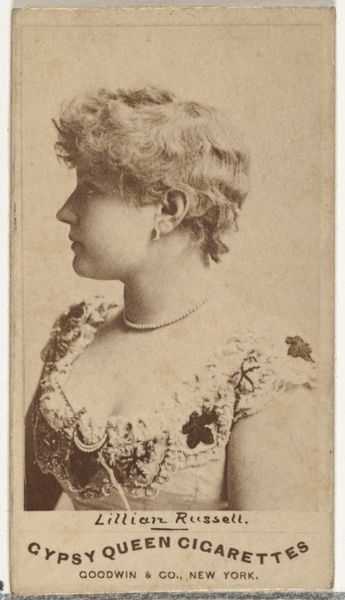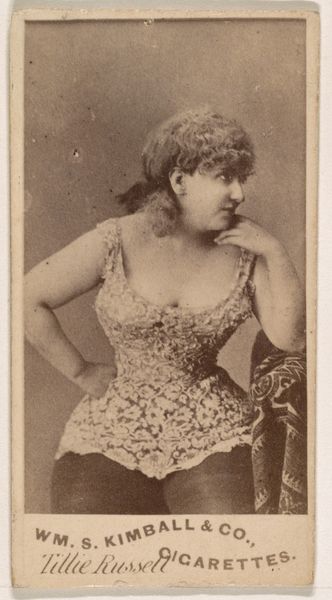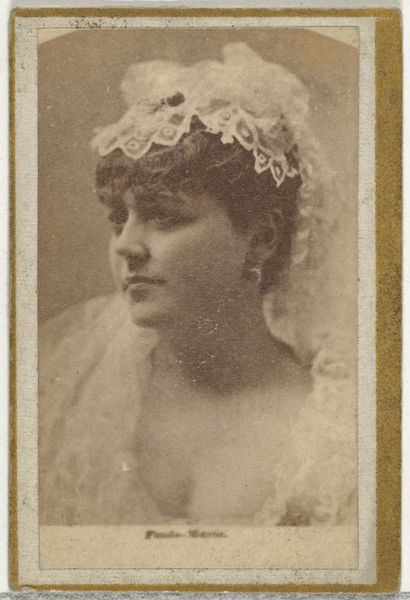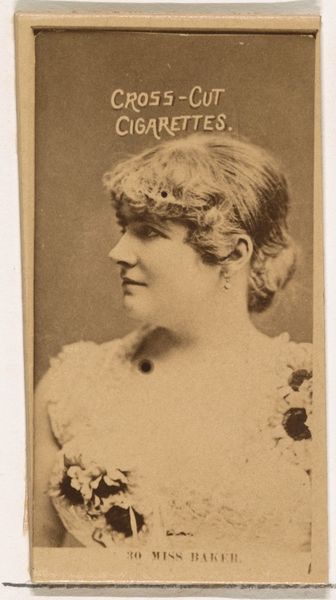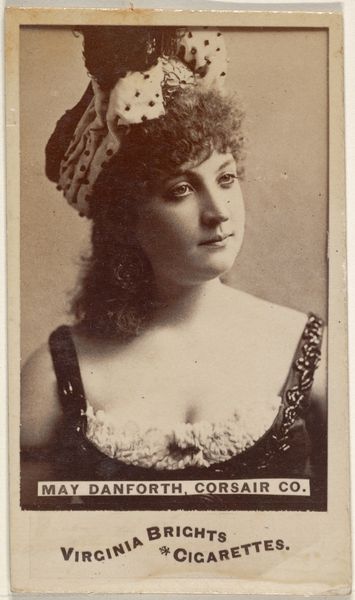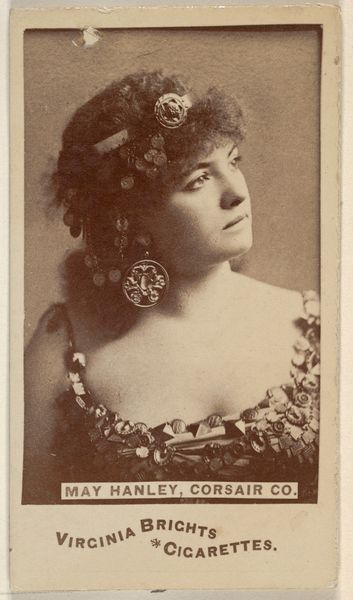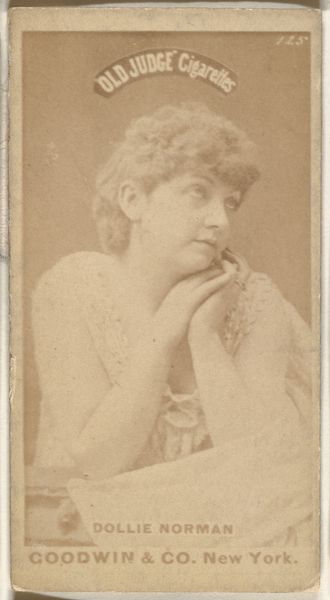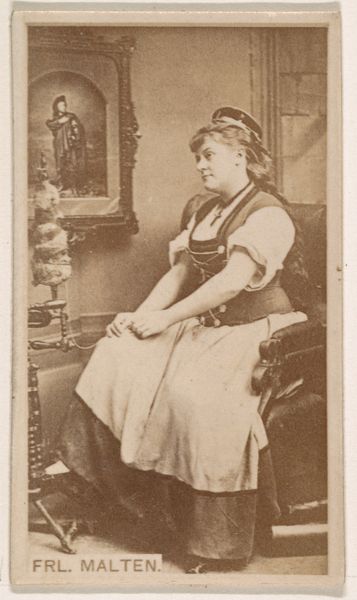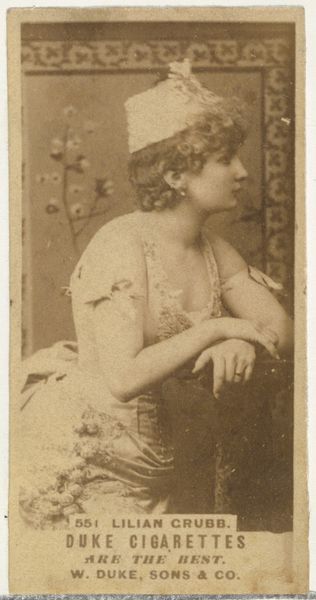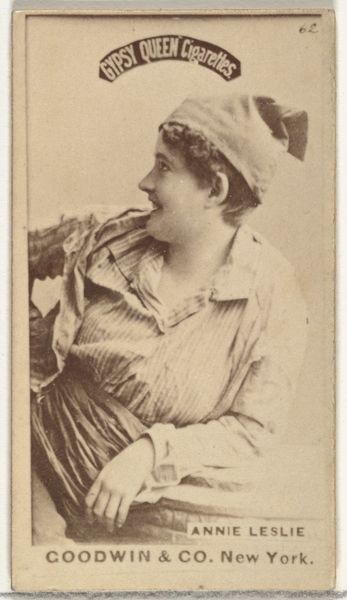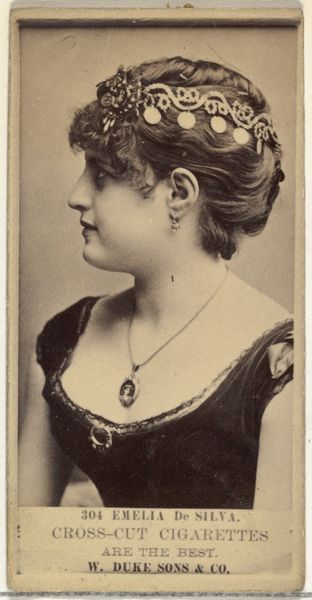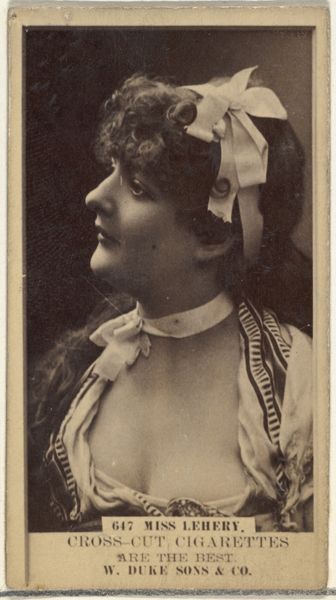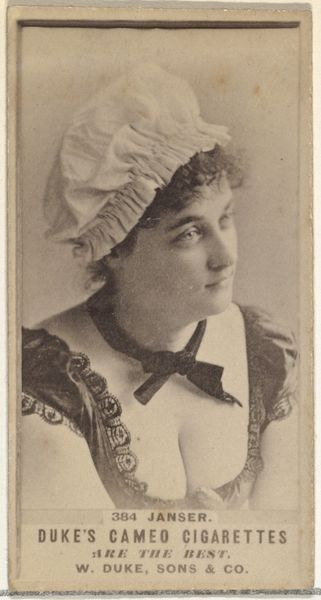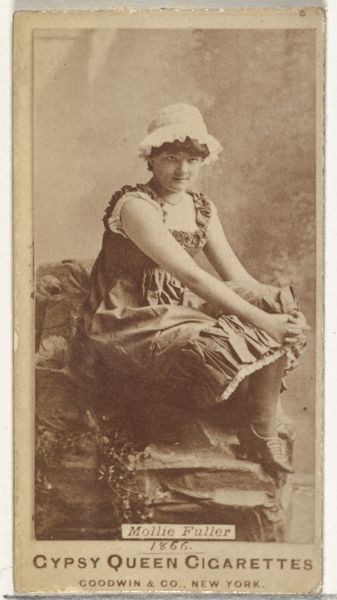
Lottie Forrest, from the Actors and Actresses series (N171) for Gypsy Queen Cigarettes 1886 - 1890
0:00
0:00
print, photography
#
portrait
# print
#
photography
#
19th century
Dimensions: sheet: 2 11/16 x 1 3/8 in. (6.9 x 3.5 cm)
Copyright: Public Domain
Curator: I find this portrait so evocative. It is entitled "Lottie Forrest, from the Actors and Actresses series (N171) for Gypsy Queen Cigarettes" and dates to sometime between 1886 and 1890. Editor: The sepia tone gives it a vintage feel, but what strikes me first is how this printed photograph on such a small card represents a specific commercial exchange; advertising actors along with cigarettes manufactured by Goodwin & Company. The industrial production and mass consumption of both products speak volumes about this historical moment. Curator: Precisely. And this small format allowed a wider audience access to a kind of celebrity image—actresses as a reflection of the Gilded Age aspirations, hopes, and desires. The flowing script announcing “Gypsy Queen” cigarettes feels so suggestive of that. Editor: Consider also, how photographs were becoming rapidly democratized at this time. While painting was still primarily for elites, this affordable photographic image circulated among consumers, integrating into daily life as promotional ephemera. Curator: That’s a really key point. What resonates with me is how Goodwin & Co used recognizable figures from popular entertainment. In a sense, Lottie Forrest, in her lacy dress and coiffed hair, is an emblem. It goes far beyond simple product promotion. Editor: Exactly. We need to look at this actress as part of the cigarette manufacturing process. I'd be interested in learning more about the production costs for each card and also details on how factory workers experienced these production practices. The labor context can't be dismissed. Curator: Well, even though these are promotional cigarette cards, in a way, the tradition speaks to icons—in a cultural, not religious, sense. A little token with an immediately identifiable figure and logo…it has its own enduring symbolism, wouldn't you say? Editor: Perhaps, but I lean towards analyzing who this benefits in a capitalist marketplace more than delving into enduring symbols. Ultimately, the image of Lottie Forest served a clear material function: to drive sales in the 19th-century tobacco market. Curator: A completely valid reading. Thank you for helping contextualize its significance. Editor: Thank you, a productive discussion!
Comments
No comments
Be the first to comment and join the conversation on the ultimate creative platform.
